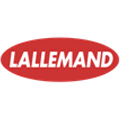 A group of scientists from three research institutions –Clermont-Ferrand University, INRA, Institut de l’Elevage, and Ghent University – and Lallemand Animal Nutrition published an in-depth review on post-weaning piglet gut microbiota dysbiosis in Trends in Microbiology1. First, the researchers reviewed the impact abrupt dietary and environmental changes during weaning caused to piglets’ digestive microbiota, which can lead to enteric problems. Next, the researchers looked into the effects of non-antimicrobial alternatives that are currently evaluated to restore intestinal balance and allow better management of the weaning transition. One of the conclusions of this extensive review is that, “among the available alternatives, probiotics seem to have the highest potential and could represent a safe opportunity to fight against post-weaning dysbiosis and enteric infections in the swine industry.” Additionally, the review evaluates in vitro models that have been designed to study piglet microbiota and develop new feed additives, which is aligned with the EU 2010 directive to reduce the use of animals in research additives.
A group of scientists from three research institutions –Clermont-Ferrand University, INRA, Institut de l’Elevage, and Ghent University – and Lallemand Animal Nutrition published an in-depth review on post-weaning piglet gut microbiota dysbiosis in Trends in Microbiology1. First, the researchers reviewed the impact abrupt dietary and environmental changes during weaning caused to piglets’ digestive microbiota, which can lead to enteric problems. Next, the researchers looked into the effects of non-antimicrobial alternatives that are currently evaluated to restore intestinal balance and allow better management of the weaning transition. One of the conclusions of this extensive review is that, “among the available alternatives, probiotics seem to have the highest potential and could represent a safe opportunity to fight against post-weaning dysbiosis and enteric infections in the swine industry.” Additionally, the review evaluates in vitro models that have been designed to study piglet microbiota and develop new feed additives, which is aligned with the EU 2010 directive to reduce the use of animals in research additives.
Reviewing non-antibiotic approaches in weaning piglets

Based on the need for non-antibiotic alternative strategies to restore microbial balance and control gastro-intestinal infections associated with weaning transition in piglets, the authors reviewed studies with several types of such approaches: Zn oxide, organic acids, essential oils, prebiotics and probiotics. Concerning the latest, they reviewed 12 probiotic studies (six in healthy piglets, six in pathogen-challenged piglets) conducted with different types of bacteria or yeast probiotics. Conclusions led researchers to conclude that “among the available alternatives, probiotics seem to have the highest potential as they constitute the only feed additive that is efficient towards pathogenic strains in piglets. Although the underlying mechanisms are not fully understood, protection of piglets from post-weaning infections by probiotics could notably occur through inhibition of pathogen growth and adhesion to intestinal mucosa, stimulation of the piglet immune system, or modulation of the composition and activity of the resident microbiota.”1
PigutIVM: the in vitro model of the piglet colon
The same review also evaluated in vitro models of piglet gut. Lallemand Animal Nutrition, together with academic partners from UMR MEDIS INRA-Clermont-Ferrand University, ANSES, and Ploufragan University Bretagne Loire, has recently contributed to the development of a new dynamic in vitro model of the piglet colon, called PigutIVM. Until now, only few in vitro models of the pig gut existed and none reproduced the piglet gut. Nevertheless, such a tool would be of high interest since the first weeks of life are a critical phase in the swine growing cycle. PigutIVM is the first model of its kind that reproduces the anaerobic conditions of the colon maintained by microbial fermentations. It was used for the first time to assess the impact of antibiotics on the colonic microbiota of piglets and the effect of the probiotic yeast Saccharomyces cerevisiae var. boulardii CNCM I-1079. The first results were published earlier this year2. The authors concluded to the relevance of this model to replicate in vivo situations, and to its possible adaptation in future research projects to study piglet digestive dysbiosis.
Interestingly the positive effect of Saccharomyces cerevisiae var. boulardii CNCM I-1079 on the decrease of E. coli levels using the PigutIVM confirmed previous in vivo evidence. A new project is on-going with the same partners to improve the model and study various dysbiosis scenarii and new ways to mitigate it.
Dr Mathieu Castex, R&D Director for Lallemand Animal Nutrition comments: “We are very proud to be involved in such advanced research into piglet microbiota. Over the past decades, ruminant researchers have focused a lot on the characterization and understanding of the rumen microflora and experimental models, from in vitro fermenters to cannulated cows, are common tools. When Lallemand started looking into swine microbiota more than ten years ago, the level of knowledge was really low, and we acknowledged the fact that the swine microflora was underestimated.”
“Capitalizing on our advances in ruminant microflora, we focused major R&D efforts on piglets’ and sows’ digestive microflora. Development of the PigutIVM is one piece of the puzzle that will help us get a better understanding of probiotics’ and antimicrobials’ modes of action, but also to look for new solutions, a key in the actual context of antimicrobial reduction.” concluded Dr Frédérique Chaucheyras-Durand, Research Manager.
1 Gresse R, Chaucheyras-Durand F, Fleury MA, Van de Wiele T, Forano E, Blanquet-Diot S. Gut Microbiota Dysbiosis in Postweaning Piglets: Understanding the Keys to Health. Trends Microbiol. 2017 Jun 8. pii: S0966-842X(17)30118-X. doi: 10.1016/j.tim.2017.05.004
2 Fleury MA, Le Goff O, Denis S, Chaucheyras-Durand F, Jouy E, Kempf I, Alric M, Blanquet-Diot S. Development and validation of a new dynamic in vitro model of the piglet colon (PigutIVM): application to the study of probiotics Appl Microbiol Biotechnol. 2017 Mar;101(6):2533-2547
September 26, 2017 - Lallemand.



